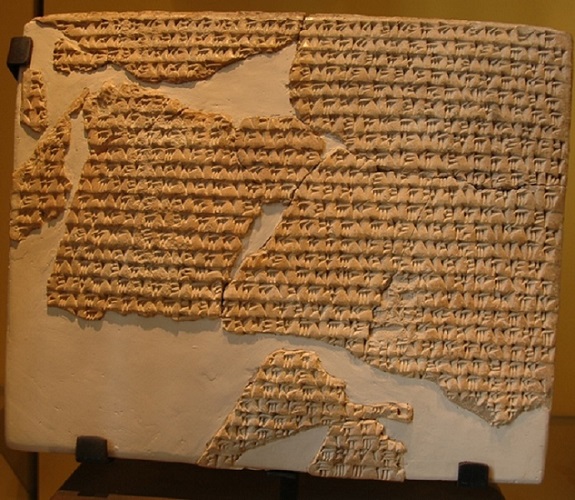
Apadana Palace | The Palace of Darius in Susa (Shush)
In 6th century BC, Darius the Great gathered materials and people from around the ancient world to set the foundations of a royal complex as impressive as his empire: Apadana Palace. As one of the most important parts of the ancient city of Susa (UNESCO World Heritage), the remains of this prototype of ceremonial architecture are now a top attraction of Shush, Iran. Like to find out more about this ancient treasure? Then stay with me 😊
Contents
- 1 Apadana Castle Shush – Why Visit Apadana Palace?
- 2 Why the Name ‘Apadana’?
- 3 Apadana Castle Shush – The Story of the Palace of Darius in Susa
- 4 Apadana Susa – Apadana Architecture
- 5 The Louvre Museum: A Nice Host to Susa Relics
- 6 Inscriptions Found in Apadana Castle Shush – Darius the Great’s Inscription
- 7 More About Apadana Palace – Apadana Castle Shush
- 8 The Palace of Darius on Map (Apadana Castle Shush)
Apadana Castle Shush – Why Visit Apadana Palace?
- Apadana Palace is one of the most prominent pieces of the UNESCO-listed Susa.
- It is one of Iran’s most important ancient palaces.
- It features the special architecture and history of Achaemenid Empire (550 to 330 BC).
- The complex was the prototype of ceremonial architecture in Achaemenid era.

Apadana Castle Shush – The remains of Apadana Palace photo
Why the Name ‘Apadana’?
Apadana is an old Persian word that means a large hall or palace with columns. Above all, Apadana Palace of Susa and Apadana Palace of Persepolis are of the two Apadanas you can find in Iran. The second largest Apadana of Iran after the one in Persepolis is Apadana Palace of Susa.
Apadana Castle Shush – The Story of the Palace of Darius in Susa
Susa was probably of religious importance to the Achaemenids (550 to 330 BC). That’s why Darius the Great chose it as his winter capital. On the remains of Elamite structures, he set the foundations of his grand palace complex (521 to 515 BC). Bringing construction materials and workers from other parts of the world, he leveled the previous structures, created a large terraced platform, and built a royal collection.

Apadana Castle Shush – Rock reliefs of Apadana Palace – Louvre Museum photo
Apadana Susa – Apadana Architecture
Over the ruins you see today, Apadana Palace used to stand in full glory and an impressive architecture. The whole architectural plan and decorations exhibit the artistic innovation of the Achaemenids. One of the remarkable features of Apadana Palace is the platform over which they built the whole structure. After flattening over 10 hectares of land, the Babylonian architects of the complex used a thousand-year-old method and built the foundation platform of the palace with mudbrick.
After the long process of building the artificial platform, they constructed the different parts of the impressive complex: halls, porticos, colonnades, and courtyards. The central hall featured thirty six 20-meter-tall columns with bull heads on them. The walls of the ceremonial hall were made of glazed brick. Ancient Persian artists painted the Persian Immortals (an army of 10,000 soldiers in Achaemenid Empire), the winged lion, and lotus flower over these brick walls. You can now check out the remains of these stunning walls in top world museums. The palace was an Imaret with 3 columned porticos on its northern, western, and eastern sides. Plus, the courtyards both lighted the interiors and provided them with ventilation. Up to now, archaeologists have found 110 chambers and halls in the complex.

The Persian Immortals – Apadana Palace
The Louvre Museum: A Nice Host to Susa Relics
In 1880, a group of French archaeologists dug Apadana palace out of the earth. They cut the walls, columns and capitals and took them to France. As a result, except for bits and pieces of the bases, nothing has remained of the impressive palace. Most of the relics are now kept in the Louvre Museum.

The winged lion of Apadana Palace – Louvre Museum photo
Inscriptions Found in Apadana Castle Shush – Darius the Great’s Inscription
During excavation projects in Apadana Palace, archaeologists discovered an important inscription. In it, Darius the Great first praises Ahura Mazda (the highest spirit worshiped in Zoroastrianism). Then he lists his royal lineage. After that, he explains the construction process of Apadana palace.

Apadana Castle Shush – Darius’s Inscription found in Susa
More About Apadana Palace – Apadana Castle Shush
Visit Hours
Spring and Summer: 9 a.m. to 7 p.m.
Fall and Winter: 9 a.m. to 5 p.m.
Visit Days
Every day except some public holidays
The Nearby Attractions
In the city of shush, you can find a collection of world-famous ancient sites. Among them the 18th century Shush Castle which used to be a base for French archaeologists is worth a visit. The beautiful architecture of the castle, the view it gives to the archaeological site beside it, and the ancient bricks used in its construction have added to its popularity. But if you like to take a tour of Persia’s different historical periods, Susa Museum, one of Iran’s top museums showcasing ancient relics, is a must-see. Plus, if you are interested in religious culture, the Tomb of Daniel is also nearby.
Where to Eat Nearby
Ziggurat Restaurant
Arad Restaurant Hatam Restaurant







